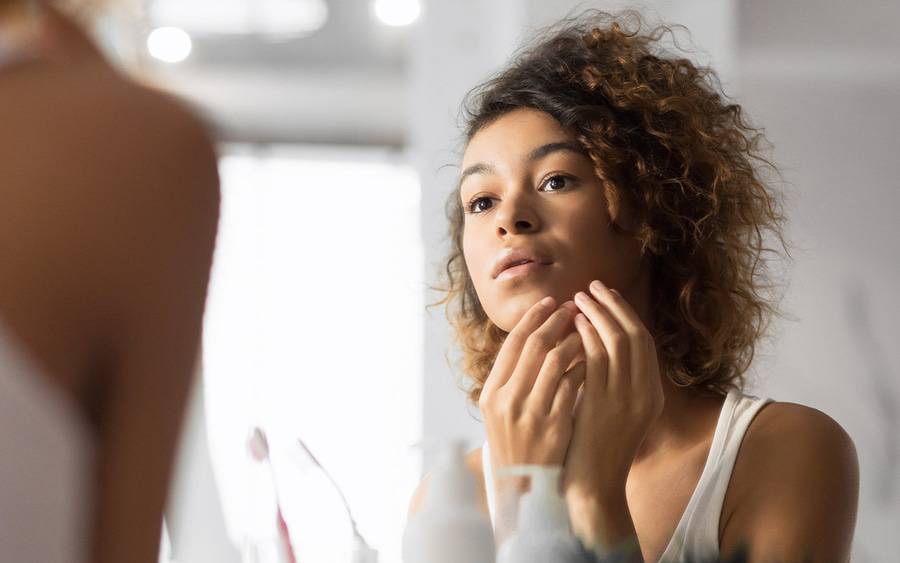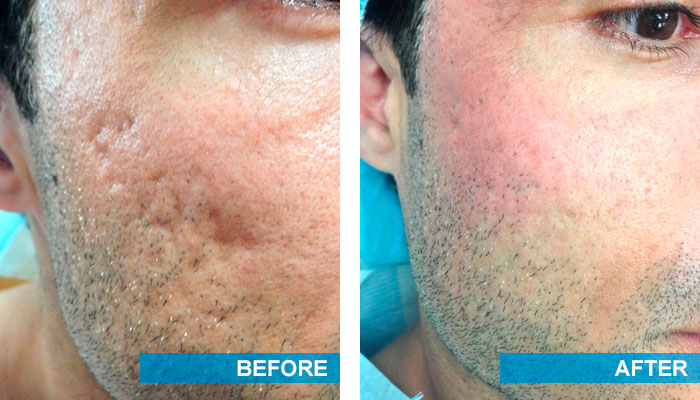Expert Acne and Acne Scars Treatment: Long-Lasting Outcomes for Clearer Skin
Expert Acne and Acne Scars Treatment: Long-Lasting Outcomes for Clearer Skin
Blog Article
Comprehending the Numerous Skin Disease and Reliable Therapy Alternatives for Acne Marks
Acne marks stand for a complex interplay of skin conditions that significantly impact individuals' self-esteem and overall skin health. Understanding the distinct types of acne marks-- atrophic and hypertrophic-- along with their underlying causes, is pivotal for determining effective treatment approaches. Numerous healing alternatives exist, varying from sophisticated dermatological procedures to all-natural solutions. Nonetheless, the effectiveness of these treatments frequently rests on personalized assessments by certified experts. As we check out the landscape of acne scar management, it comes to be obvious that the journey towards more clear skin may entail even more than just topical remedies.
Sorts Of Acne Scars
Acne scars can show up in numerous kinds, each needing certain therapy strategies. Both key groups of acne marks are hypertrophic and atrophic scars. Atrophic marks are characterized by a loss of cells, causing depressed locations on the skin. These scars are additional classified right into three subtypes: ice pick marks, which are narrow and deep; boxcar marks, which are wider and have distinct sides; and rolling scars, which produce a wave-like look due to uneven skin structure.
In comparison, hypertrophic marks result from an overproduction of collagen during the recovery procedure, bring about elevated areas on the skin. These scars are usually firm and can vary in color, often showing up red or darker than the bordering skin.

Reasons For Acne Scarring
Marking happens as a result of the body's all-natural recovery reaction to inflammation and injury created by acne sores. When acne forms, it triggers an inflammatory feedback, causing the release of numerous cytokines and development variables that promote healing. Nonetheless, this process can sometimes bring about excessive cells development or insufficient repair work, leading to marks.
The primary reasons for acne scarring include the intensity of the acne itself, period of the lesions, and private skin kinds. Severe inflammatory acne, such as nodules and cysts, is more probable to lead to scarring due to deeper cells damage. In addition, improper handling of acne lesions, such as selecting or pressing, can aggravate tissue injury and inflammation, boosting the possibility of scarring.
Hereditary proneness likewise plays a considerable role; individuals with a household background of scarring go to a greater threat. Moreover, skin kind and shade can influence scar development, as darker skin tones might experience post-inflammatory hyperpigmentation, while lighter skin might develop atrophic scars.

Treatment Choices for Scarring
Effective therapy choices for acne scarring differ depending upon the type and extent of the marks. Usually categorized into atrophic, hypertrophic, and keloid scars, these problems call for customized methods for optimum outcomes.
For atrophic scars, which are characterized by a loss of cells, therapies such as chemical peels, microdermabrasion, and laser therapy are commonly employed. These approaches advertise skin renewal and stimulate collagen production, thus improving skin texture. Subcision, a minimally intrusive procedure, can also work by damaging up coarse bands under the skin.
Hypertrophic and keloid scars can be a lot more challenging to deal with. Alternatives include corticosteroid injections to decrease swelling and flatten the scars. acne treatment for sensitive skin. In many cases, cryotherapy or laser therapy might be advised to reduce their appearance
Surgical options are offered for extreme scarring, where excision or skin grafting may be required. It's important for people to seek advice from a skin doctor to analyze their details scar type and talk about one of the most ideal treatment plan. Combining numerous treatments typically yields the very best outcomes, making sure that each individual's unique skin condition is addressed successfully.
Natural Home Remedy and Natural Solutions
All-natural remedies and home solutions can supply an accessible strategy for people looking for to improve the look of acne marks. Numerous active ingredients found in the home kitchen have actually shown possible advantages in improving skin appearance and advertising healing.
Using fresh aloe vera gel straight Extra resources onto the scars can assist improve skin hydration and lower redness. Honey possesses natural anti-bacterial and moisturizing qualities that can aid in mark recovery.
An additional efficient choice is lemon juice, which functions as an all-natural exfoliant and can lighten hyperpigmentation. It needs to be made use of carefully, as it might trigger photosensitivity. Oatmeal masks are also useful; their gentle peeling can aid get rid of dead skin cells while calming irritability.
Important oils, such as tea tree oil and lavender oil, can even more sustain scar recovery because of their antimicrobial homes. It is vital to do a spot test prior to applying any treatment to make certain there are no adverse responses. These natural options can be a corresponding method in the trip to reduce acne scars.
Preventing Future Scarring
Taking on a positive strategy to skincare can dramatically minimize the threat of establishing future acne marks. One of the key techniques is to manage acne efficiently as it emerges (acne scars treatment). This includes making use of non-comedogenic skin care items and medications recommended by dermatologists that target acne without aggravating the skin. Regular cleansing, exfoliation, and hydration can aid preserve skin health and wellness and avoid blocked pores.
Additionally, avoiding the lure to press or select acne lesions is crucial, as this can cause inflammation and succeeding scarring. Rather, individuals must concentrate on using topical therapies that promote healing and lower inflammation. Ingredients such as salicylic acid, benzoyl peroxide, and retinoids are known for their efficacy in check my site taking care of acne and lessening marks.

Last but not least, maintaining a healthy and balanced diet plan rich in anti-oxidants and staying hydrated assistances skin regeneration. By carrying out these safety nets, individuals can dramatically reduce their threat of future scarring and advertise general skin health.
Final Thought
In verdict, a thorough understanding of acne marks, encompassing both hypertrophic and atrophic types, is necessary for efficient therapy techniques. Assessment with a skin specialist remains essential to create customized strategies that consider specific skin kinds and scar extent, eventually improving the efficacy of scar management strategies.
Acne marks represent a complex interplay of skin conditions that substantially influence people' self-confidence and general skin health and wellness. The two primary classifications of acne scars are atrophic and hypertrophic marks. These marks are more classified right into three subtypes: ice pick scars, which are deep and narrow; boxcar marks, which are larger and have distinct edges; and rolling marks, which create a wave-like look due to unequal skin appearance.
A thorough consultation with a skin doctor can aid determine the most proper intervention, taking into account the individual's skin kind, mark seriousness, and general skin health and wellness.
Assessment with Extra resources a skin specialist remains imperative to create personalized strategies that think about private skin types and mark seriousness, ultimately boosting the efficacy of mark monitoring strategies.
Report this page